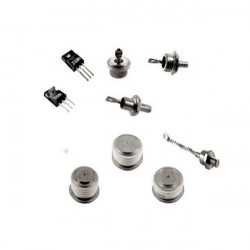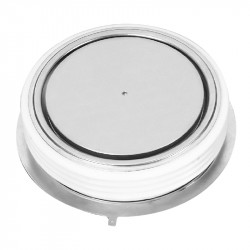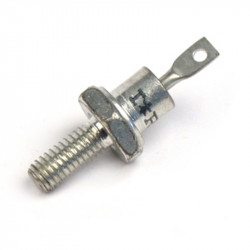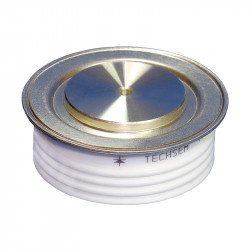-
BackX
-
Components
-
-
Category
-
Semiconductors
- Diodes
- Thyristors
-
Electro-insulated Modules
- Electro-insulated Modules | VISHAY (IR)
- Electro-insulated Modules | INFINEON (EUPEC)
- Electro-insulated Modules | Semikron
- Electro-insulated Modules | POWEREX
- Electro-insulated Modules | IXYS
- Electro-insulated Modules | POSEICO
- Electro-insulated Modules | ABB
- Electro-insulated Modules | TECHSEM
- Go to the subcategory
- Bridge Rectifiers
-
Transistors
- Transistors | GeneSiC
- SiC MOSFET Modules | Mitsubishi
- SiC MOSFET Modules | STARPOWER
- Module SiC MOSFET ABB’s
- IGBT Modules | MITSUBISHI
- Transistor Modules | MITSUBISHI
- MOSFET Modules | MITSUBISHI
- Transistor Modules | ABB
- IGBT Modules | POWEREX
- IGBT Modules | INFINEON (EUPEC)
- Silicon Carbide (SiC) semiconductor elements
- Go to the subcategory
- Gate Drivers
- Power Blocks
- Go to the subcategory
- Electrical Transducers
-
Passive components (capacitors, resistors, fuses, filters)
- Resistors
-
Fuses
- Miniature Fuses for electronic circuits - ABC & AGC Series
- Tubular Fast-acting Fuses
- Time-delay Fuse Links with GL/GG & AM characteristics
- Ultrafast Fuse Links
- Fast-acting Fuses (British & American standard)
- Fast-acting Fuses (European standard)
- Traction Fuses
- High-voltage Fuse Links
- Go to the subcategory
- Capacitors
- EMI Filters
- Supercapacitors
- Power surge protection
- TEMPEST emission revealing filters
- Go to the subcategory
-
Relays and Contactors
- Relays and Contactors - Theory
- 3-Phase AC Semiconductor Relays
- DC Semiconductor Relays
- Controllers, Control Systems and Accessories
- Soft Starters and Reversible Relays
- Electromechanical Relays
- Contactors
- Rotary Switches
-
Single-Phase AC Semiconductor Relays
- AC ONE PHASE RELAYS 1 series| D2425 | D2450
- One phase semiconductor AC relays CWA and CWD series
- One phase semiconductor AC relays CMRA and CMRD series
- One phase semiconductor AC relays - PS series
- Double and quadruple semiconductor AC relays - D24 D, TD24 Q, H12D48 D series
- One phase semiconductor relays - gn series
- Ckr series single phase solid state relays
- One phase AC semiconductor relays for DIN bus - ERDA I ERAA series
- 150A AC single phase relays
- Rail Mountable Solid State Relays With Integrated Heat Sink - ENDA, ERDA1 / ERAA1 series
- Go to the subcategory
- Single-Phase AC Semiconductor Relays for PCBs
- Interface Relays
- Go to the subcategory
- Cores and Other Inductive Components
- Heatsinks, Varistors, Thermal Protection
- Fans
- Air Conditioning, Accessories for Electrical Cabinets, Coolers
-
Batteries, Chargers, Buffer Power Supplies and Inverters
- Batteries, Chargers - Theoretical Description
- Modular Li-ion Battery Building Blocks, Custom Batteries, BMS
- Batteries
- Battery Chargers and Accessories
- Uninterruptible Power Supply and Buffer Power Supplies
- Inverters and Photovoltaic Equipments
- Energy storage
- Fuel cells
- Lithium-ion batteries
- Go to the subcategory
-
Automatics
- Spiralift Lifts
- Futaba Drone Parts
- Limit Switches, Microswitches
- Sensors, Transducers
-
Infrared Thermometers (Pyrometers)
- IR-TE Series - Water-proof Palm-sized Radiation Thermometer
- IR-TA Series - Handheld Type Radiation Thermometer
- IR-H Series - Handheld Type Radiation Thermometer
- IR-BA Series - High-speed Compact Radiation Thermometer
- IR-FA Series - Fiber Optic Radiation Thermometer
- IR-BZ Series - Compact Infrared Thermometers
- Go to the subcategory
- Counters, Time Relays, Panel Meters
- Industrial Protection Devices
- Light and Sound Signalling
- Thermographic Camera
- LED Displays
- Control Equipments
- Go to the subcategory
-
Cables, Litz wires, Conduits, Flexible connections
- Wires
- Cable feedthroughs and couplers
- Litz wires
- Cables for extreme applications
- Sleevings
-
Braids
- Flat Braids
- Round Braids
- Very Flexible Flat Braids
- Very Flexible Round Braids
- Cylindrical Cooper Braids
- Cylindrical Cooper Braids and Sleevings
- Flexible Earthing Connections
- Galvanized and Stainless Steel Cylindrical Braids
- PCV Insulated Copper Braids (temp. up to 85C)
- Flat Aluminium Braids
- Junction Set - Braids and Tubes
- Go to the subcategory
- Traction Equipment
- Cable Terminals
- Flexible Insulated Busbars
- Flexible Multilayer Busbars
- Cable Duct Systems
- Go to the subcategory
- View all categories
-
Semiconductors
-
-
- Suppliers
-
Applications
- CNC Machine Tools
- DC and AC Drives (Inverters)
- Energetics
- Energy bank
- Equipment and Components for Hazardous Areas [Ex]
- Equipment for Distribution, Control and Telecommunications Cabinets
- HVAC Automation
- Induction Heating
- Industrial Automation
- Industrial Protective Devices
- Machines for Drying and Wood Processing
- Machines for Thermoforming Plastics
- Mining, Metallurgy and Foundry
- Motors and Transformers
- Power Supplies (UPS) and Rectifier Systems
- Printing
- Temperature Measurement and Regulation
- Test and Laboratory Measurements
- Tram and Railway Traction
- Welding Machines
-
Assembly
-
-
Inductors
-
-
Induction devices
-
-
Service
-
- Contact
- Zobacz wszystkie kategorie
Dioda prostownicza – jak działa, gdzie się je stosuje, budowa.

Jednym z bardzo istotnych podzespołów elektronicznym jest dioda. Dioda ma za zadanie przepuszczać prąd w jednym kierunku. Na rynku jest wiele rodzajów diod, które różnią się od siebie kształtami, jak i oczywiście właściwościami.
Bardzo często myśląc o diodach myślimy o oświetleniu i diodach LED. Jest to jednak jeden z wielu rodzajów diod tak jak również diody Schottky’ego czy tez diody Zenera. Bardzo popularnym rodzajem diod o bardzo szerokim zastosowaniu są diody prostownicze, których zadaniem jest prostowanie prądu przemiennego.
Diody prostownicze są jednymi z najczęstszych elementów elektronicznych, ponieważ są stosowane w prawie wszystkich urządzeniach wymagających zasilania prądem przemiennym. Dzięki nim praca takich urządzeń jest możliwa, ponieważ podczas gdy przez sieć płynie prąd przemienny, urządzenia elektroniczne działają na prąd stały.
Jakie zastosowanie mają diody prostownicze?
Najprostszym zastosowaniem diody prostowniczej jest tzw. prostowanie prądu, czyli zamiana prądu przemiennego o niskiej częstotliwości na prąd stały. W diodach prostowniczych przewodzenie prądu następuje dopiero po przejściu określonej wartości napięcia w kierunku przewodzenia.
Parametry diod prostowniczych
W diodach prostowniczych występują dwa podstawowe i najważniejsze ze względu na obszar zastosowań parametry. Są to maksymalne dopuszczalne napięcie wsteczne i maksymalny prąd przewodzenia.
To właśnie te dwa parametry są najistotniejsze z punktu widzenia konstruktora parametrów.
Kolejnym istotnym parametrem jest maksymalny prąd chwilowy, który określa rzeczywistą odporność na przeciążenia. Innymi ważnymi parametrami są: czas odzyskiwania nominalnej zdolności zaporowej i maksymalna moc tracona na diodzie.
Budowa diody prostowniczej
Do budowy diod prostowniczych wykorzystuje się głównie krzem., choć można też spotkać, choć już coraz rzadziej diody germanowe. Diody prostownicze budowane są wielowarstwowo i charakteryzują się niską, kilku omową rezystancją w kierunku przewodzenia co pozwala na uzyskanie wysokiej sprawności prostowania.
Diody prostownicze do pracy z dużą mocą natomiast mają dodatkową obudowę ułatwiającą odprowadzanie ciepła a to ze względu na wytwarzanie przez nie dużych ilości ciepła. Dodatkowo wyposażane są w zespoły radiatorów czy też nawet aktywne systemy chłodzenia.
W diodzie bardzo łatwo jest ustalić kierunek przewodzenia ponieważ po stronie katody oznacza się je paskiem, który informuje nas o kierunku.
Dioda prostownicza – symbol.
Każda dioda prostownicza powinna posiadać symbol, który wskazuje zakres jej pracy. Zakres pracy diody zazwyczaj podany jest poprzez wartość natężenia prądu, który wyrażany jest w amperach (A) oraz wartość napięcia podanego w voltach (V).
Diody prostownicze można podzielić na:
- diody małej mocy – (> 1 W),
- diody średniej mocy – (1 – 10W),
- diody dużej mocy – (< 10 W).
Jak podłączyć diodę prostowniczą?
Podłączenie diody prostowniczej zależy od tego, jaki chcemy uzyskać efekt. Wyróżniamy połączenie równoległe i szeregowe.
Równoległe łączenie diod prostowniczych stosuje się gdy zależy nam na zwiększeniu obciążalności prądowej. Natomiast jeśli chcemy zwiększyć napięcie wsteczne, stosujemy połączenie szeregowe diod prostowniczych.
Related products
Related posts
 Now available – DC/DC converters from PREMIUM
Now available – DC/DC converters from PREMIUM
 New release in DACPOL lighting for lathes – Kira covers
New release in DACPOL lighting for lathes – Kira covers








Leave a comment